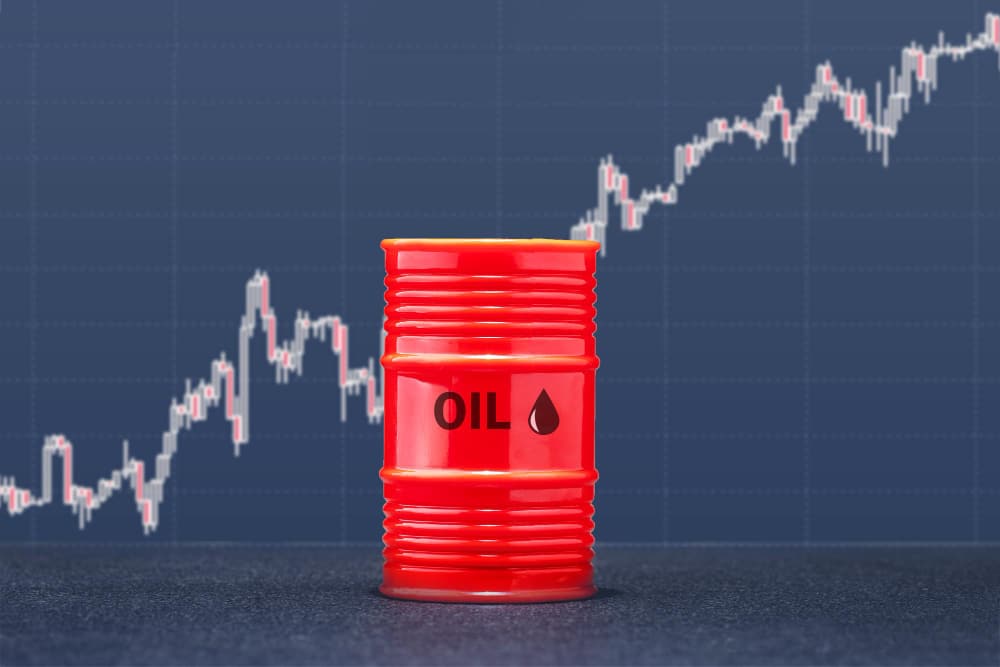*This article is aimed at energy traders and market analysts, offering a deep dive into the complex interplay of geopolitical tensions, supply dynamics, and demand trends that influence whether crude oil prices are likely to rise in the coming months.
The question on every energy trader’s mind is deceptively simple yet profoundly complex: will the price of crude oil go up in the coming months? As global markets navigate a web of geopolitical tensions, supply disruptions, and shifting demand patterns, the answer requires careful analysis of multiple intersecting factors. Let us warn you this can be a challenging landscape to interpret, even for seasoned market observers. In this article, we’ll unpack the complex interplay of factors, using insights from our Analyst Insight mode on our Trading Co-Pilot.
Recent market dynamics: A foundation for understanding
As you can see, everything starts with understanding the current price movements. Brent crude has experienced notable movements in a week of significant price action, with crude experiencing new monthly March highs.
Here, the reality of crude oil pricing is that it reflects a complex interplay of supply concerns, geopolitical developments, and market sentiment. For example, the announcement of US sanctions on Iran has tightened supply expectations, while escalating military operations in Gaza have raised fears about regional stability. At the same time, the recent US-Russia agreement on a 30-day energy ceasefire briefly calmed markets, demonstrating how quickly sentiment can shift.
Geopolitical tensions: The persistent price driver
There is something fascinating about how geopolitical events continue to exert outsized influence on crude oil markets. The vast majority of recent price movements can be traced to developments in the Middle East and Eastern Europe. It is our strong belief that these tensions will remain a key factor in determining whether crude oil prices go up or down in the coming months.
Trump’s recent threat of a 25% tariff on countries buying oil from Venezuela has introduced a new dynamic to consider. This latest instalment in a slew of madcap policy shifts could potentially redirect global oil flows and alter trading patterns, adding another layer of complexity to price forecasting. Of course, many fear that such measures could lead to retaliatory actions, further complicating international energy trade.
However, despite these challenges, markets have shown remarkable resilience. Some might say that this resilience suggests underlying strength in the oil market, possibly indicating that crude prices may trend upward if geopolitical tensions continue to escalate. Nevertheless, it’s prudent an air of caution is retained, as market sentiment can rapidly shift based on diplomatic developments.
Supply dynamics: OPEC+ and production capacity
Coming back to supply factors, OPEC+ continues to play a pivotal role in answering the question of whether crude oil prices will go up. The group’s plans to address overproduction issues through output cuts have provided some support to prices. The key principle is to maintain market equilibrium through coordinated production adjustments, though compliance remains a persistent challenge.
At this point, it’s worth noting that reports of increased production capacity in Iraq and the potential for increased output from non-OPEC producers could offset some of these supply constraints. The biggest flaw in many bullish oil price forecasts is underestimating the resilience of global production capacity, particularly in the US shale sector.
And you’ll hear lots of talk about how supply disruptions in Nigeria, where a recent pipeline explosion has raised concerns, could drive prices higher. True, there are still notable supply risks in several key producing regions. Yet appreciating the global nature of oil markets means understanding that regional disruptions often have muted effects on global prices unless they persist or spread.
Demand outlook: Economic indicators and global growth
Let’s start by exploring the root causes of recent demand optimism. The latest economic indicators from the US have been relatively positive, suggesting resilient energy demand in the world’s largest economy. This positive sentiment contributed to the recent rally.
But here’s the inconvenient truth: global economic growth remains uneven, with various regions facing different challenges. Even more importantly, the transition to renewable energy sources continues to accelerate, potentially capping long-term demand growth for crude oil.
It’s no surprise that market analysts, including Goldman Sachs, have expressed caution about crude oil price prospects, citing risks associated with tariffs and excess production capacity. The starting point for this is recognising that crude oil markets are influenced by both cyclical and structural factors, making predictions about whether prices will go up particularly challenging.
Will the price of crude oil go up? A measured perspective
So while we cannot be certain that crude oil prices will follow a clear upward trajectory, there are several factors that suggest continued volatility with potential for modest gains. For those that succeed in navigating this complex market, understanding the interplay between geopolitical tensions, supply dynamics, and demand trends will be essential.
There is no guarantee, of course, that crude oil prices will continue their recent upward momentum. In consequence, a neutral stance appears warranted as traders assess the implications of recent events on future price movements. The latest developments, including escalating tensions in Gaza and Ukraine, suggest that geopolitical risk premiums may continue to support prices in the near term.
Perhaps then, we had better end with the recognition that crude oil markets are inherently unpredictable. If all that is not enough to complicate the analysis, consider that market sentiment can shift rapidly based on news headlines, economic data releases, or unexpected supply disruptions.
In the struggle against uncertainty, sophisticated AI-driven market analysis tools like our Trading Co-Pilot can help to delayer the current conditions and provide valuable insights into emerging trends and sentiment shifts.
